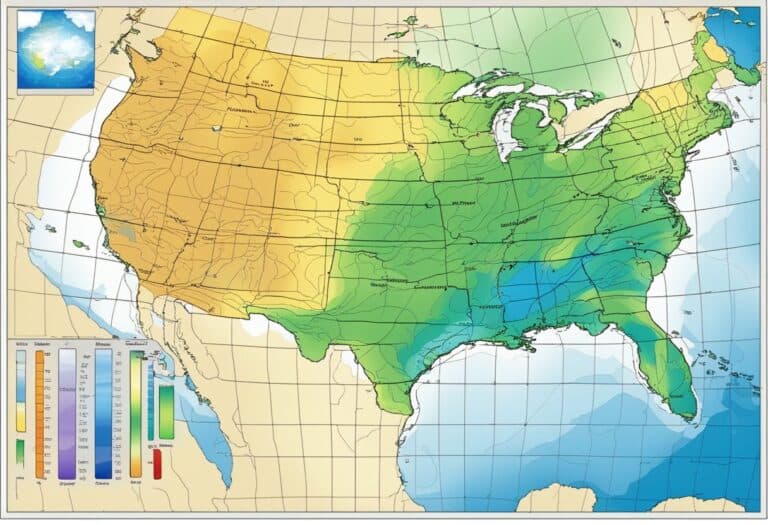Understanding the accuracy of home weather stations is crucial for anyone interested in climate conditions for personal or professional reasons.
These devices provide localized weather data, which can range from basic temperature readings to more comprehensive data that includes humidity, wind speed, and rainfall. However, not all weather stations are created equal, and accuracy can vary significantly from one model to another. As a user, your ability to make informed decisions depends on how well your device captures and analyzes environmental data.
When selecting a home weather station, you should consider factors like sensor quality, data logging frequency, and the specific needs of your local climate. Integration with other smart home devices and interconnectivity features can also enhance your weather-monitoring experience, enabling you to access and analyze the data more effectively.
Whether you are a gardening enthusiast, a weather hobbyist, or someone who simply wants to know if you need an umbrella before stepping out, a reliable home weather station can be a valuable tool.
Home weather stations can offer varying levels of accuracy, largely dependent on sensor quality, installation location, and maintenance. High-quality sensors in optimally positioned stations can provide precise local weather data, enhancing personal forecasts and climate understanding. Regular calibration and integration with smart systems further improve data reliability and user experience.
Understanding Weather Station Accuracy
Before you dive into the world of home weather stations, it’s crucial to grasp how accuracy can vary. Factors like sensor quality, maintenance, and installation can significantly affect the precision of the data you receive, from temperature readings to wind speeds.
Factors Influencing Accuracy
The quality and design of sensors are decisive factors affecting the accuracy of weather stations. For instance, units like the Davis Vantage Pro2 use specialized barometric pressure and humidity sensors that are known for their reliability. Additionally, the granularity of measurements, sometimes referred to as precision, and the range in which sensors operate can introduce variability in reporting conditions like temperature, rainfall, and wind speed.
Calibration and Maintenance
Regular maintenance and calibration are essential to ensure that your weather station maintains its accuracy over time. Even durable models like the Ambient Weather WS-2902 require periodic checks to ensure ongoing sensor accuracy. For example, calibrating pressure sensors can be crucial after relocation or environmental changes.
Technological Innovations
Technological innovations such as fan aspirated radiation shields or sonic anemometers, found in cutting-edge stations like the WeatherFlow Tempest, enhance sensor accuracy by reducing environmental interferences. Smart home connectivity options further allow for detailed data analyses and integration with other smart devices for a comprehensive environmental overview.
Comparing Sensor Types
There are different sensor types, such as the haptic rain sensor and traditional tipping buckets for measuring rainfall, each with its own methodological advantages. Comparing these can reveal differences in accuracy and durability. For instance, the Vantage Vue features robust sensors that provide reliable ambient weather data.
Effect of Location and Installation
The correct siting of your weather station is critical. Direct sunlight, obstructions, and improper siting can significantly skew temperature and humidity readings, making radiation shielding necessary. A properly installed fan aspirated radiation shield, for instance, guarantees more accurate indoor and outdoor temperature readings by minimizing the impact of solar radiation.
Good installation also includes considering air quality and lightning detection sensors. These should be placed appropriately to ensure the maximum quality of data collection, clear of interference from ambient solar radiation and other sources of light that could affect their precision.
Selecting a Home Weather Station
When you’re in the market for a home weather station, accurate and reliable readings hinge on choosing a model with the right features and considerations suited to your needs.
Key Features and Specifications
Your home weather station should encompass essential features to ensure precision and utility. The display should be clear and user-friendly; a color display can provide an easier read at a glance. Look for key features like temperature, humidity, and barometric pressure sensors, and consider their reported accuracy levels.
Compelling stations often offer connectivity options, including a Wi-Fi connection that enables data sharing with online weather services. Confirm if the unit can connect to your smartphone through a mobile app, offering real-time data and alerts. The expandability of the station is also crucial; it should allow the addition of extra sensors if needed.
Key Specifications:
- Display clarity and type (e.g., color, touchscreen)
- Measurement accuracy
- Sensor types included (temperature, humidity, etc.)
- Data update frequency
Connectivity:
- Wi-Fi capability
- Compatibility with smartphones and apps
- Data exportability to weather services
Additional Considerations
When it comes to cost and affordability, be wary of choosing the cheapest option, as it might not provide the reliability you require. It’s a balance of cost versus features. Ease of use is another factor; your weather station should offer straightforward setup and maintenance.
Cost vs. Features:
- High-end features often equate to higher costs.
- Determine which features justify the expense for your situation.
Ease of Use:
- Simple installation process
- Intuitive interface for daily operation
Consider these points carefully to find a weather station that meets your expectations for accuracy and functionality without exceeding your budget.
Integration and Interconnectivity

In enhancing your home weather station’s performance, integration and interconnectivity pave the way for robust data analysis and the utility of weather data within your smart home ecosystem.
Connectivity Options
Your home weather station can transmit data via various connectivity methods, most notably Wi-Fi and Internet connectivity. With Wi-Fi, your station can connect easily to networks like the Ambient Weather Network for seamless data integration. This connectivity implies that your station’s data can be accessed remotely through a smartphone or computer, allowing you to monitor environmental conditions in real-time.
- Smart Home Support: Many stations now offer compatibility with smart home devices, integrating with platforms that can automate actions based on the data collected.
- Weather Underground: A popular platform for personal weather station owners who wish to share their data is Weather Underground. By connecting your device to their network, you become part of a broader community contributing to localized weather reporting.
Data Analysis and Sharing
Once your home weather station is connected, you possess the capability to perform comprehensive data analysis.
- LCD Display: Your station typically includes an LCD display that provides current readings at a glance. However, for trends and historical data, additional analysis is required.
- Personal Weather Station Data: The depth and complexity of the data collected allow you to track minute changes in weather patterns, informing decisions for home and garden maintenance.
By sharing this data on platforms like the Ambient Weather Network or Weather Underground, not only do you contribute to the global weather monitoring efforts, but you also tap into a community resource that can refine your understanding of microclimates and broader weather phenomena.
Frequently Asked Questions
Weather stations at home can bring a level of precision to your personal observations. Explore common inquiries to better understand their accuracy and capabilities.
How do home weather stations ensure accurate temperature readings?
Your home weather station maintains accuracy in temperature readings through proper siting and calibration. To achieve the best results, sensors should be placed away from artificial heat sources and at the recommended height off the ground.
What factors contribute to the precision of a rain gauge in personal weather stations?
The precision of a rain gauge in your personal weather station is influenced by its placement and design. It should be placed in an open area away from obstructions with the funnel at a certain height to minimize splashes and evaporation.
Which weather stations are recommended for farmers requiring detailed climate data?
Farmers requiring detailed climate data typically opt for Automated Weather Stations (AWS) that offer advanced sensors for a variety of metrics including soil moisture and leaf wetness, which are critical for agricultural decision-making.
How do professional weather stations differ from those used in homes?
Professional weather stations generally offer higher degrees of data accuracy and reliability, as well as durability to withstand harsh conditions. These stations are often calibrated more frequently and use more refined sensor technology.
Can personal weather stations be integrated with national weather services like NOAA for enhanced prediction?
Yes, personal weather stations can be integrated with national weather services such as NOAA. This collaboration can contribute to large-scale data sets, enhancing the prediction models and accuracy of weather forecasts.
What are the benefits of choosing a weather station with remote monitoring capabilities?
Selecting a weather station with remote monitoring capabilities allows you to access real-time data from anywhere. This feature is especially useful for continuous monitoring and can assist in making timely decisions based on current weather conditions.






![Ambient Weather WS-2000 Review in [year]](https://observationhobbies.com/wp-content/uploads/2024/01/Ambient-Weather-WS-2000-Review-768x525.png)
